Gà luộc cánh tiên (Angel Wing Boiled Chicken)
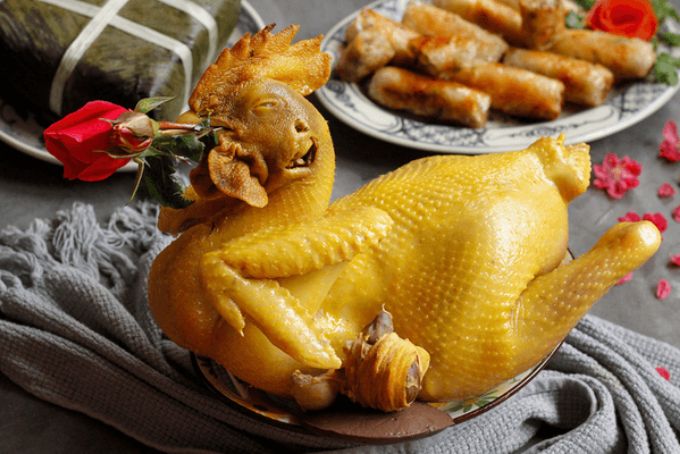
Ingredients
Main Protein
-
1 whole chicken (2.5–2.7kg – ideally gà ta for firmer texture and better flavor)
Aromatics & Cleaning Ingredients
-
1 small knob of fresh ginger (crushed – for boiling and rubbing chicken)
-
½ cup white rice wine or vinegar (to clean and deodorize the chicken)
-
A few pinches of coarse salt (muối hạt – for scrubbing the skin)
Seasonings
-
3 tsp soup powder (bột canh – or a mix of salt + msg to taste)
Garnish (Optional but Traditional for Presentation)
-
1 rose stem (used while boiling to add a delicate floral aroma and symbolism in presentation)
Nutritional Information
For: Omnivores
Calories per serving: ~ 280–320 kcal (per 100g cooked chicken with skin)
Key Nutrients
1. Lean Protein (25–28g)
- Source: Whole chicken
- Benefits: Supports muscle repair, hormone production, and helps maintain a healthy metabolism.
2. Healthy Fats (10–12g)
- Source: Chicken skin and fat
- Benefits: Provides energy, improves satiety, and supports absorption of fat-soluble vitamins (A, D, E, K).
3. Antioxidants & Detoxifiers
- Gingerol (ginger): Aids digestion, reduces nausea, and has anti-inflammatory effects
- Polyphenols (rose stem, optional): Traditionally believed to improve aroma and add a light floral note
4. Essential Minerals
- Iron & Zinc (chicken): Important for red blood cell production and immune health
- Phosphorus & Magnesium (chicken): Support bone strength and energy metabolism
1. Preparing the chicken
If you’re slaughtering the chicken yourself, tie its legs together tightly. Hold its neck firmly, stretch it out, and swiftly cut the artery below the ear to minimize struggling and let the blood drain quickly. Collect the blood if desired.
Dip the chicken in 70–80°C hot water for 30–60 seconds—hot enough to pluck easily but not so hot that it tears the skin. Pluck cleanly, rinse well.
At the incision, remove the throat and crop. Make a small slit above the breastbone to pull out the esophagus and crop completely. Next, make a 6cm cut under the vent to remove the internal organs. Clean the gizzard, liver, intestines, and heart with salt or ginger water to deodorize. If it’s a rooster, keep the testicles (“kê”).
💡 Tip: For ceremonial chicken, keep the feet intact. Trim the nails and clean the skin thoroughly.
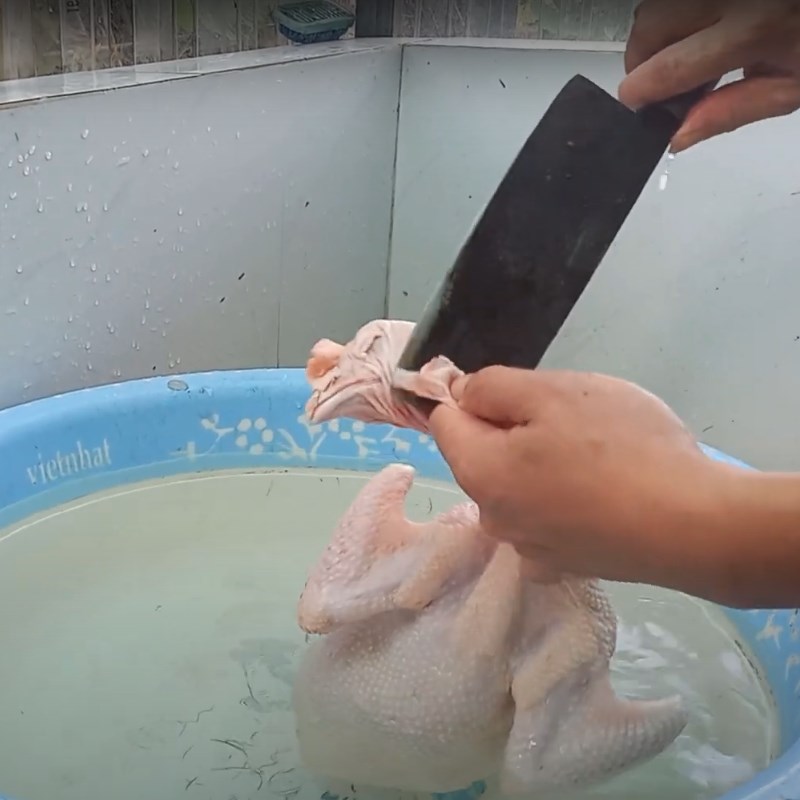
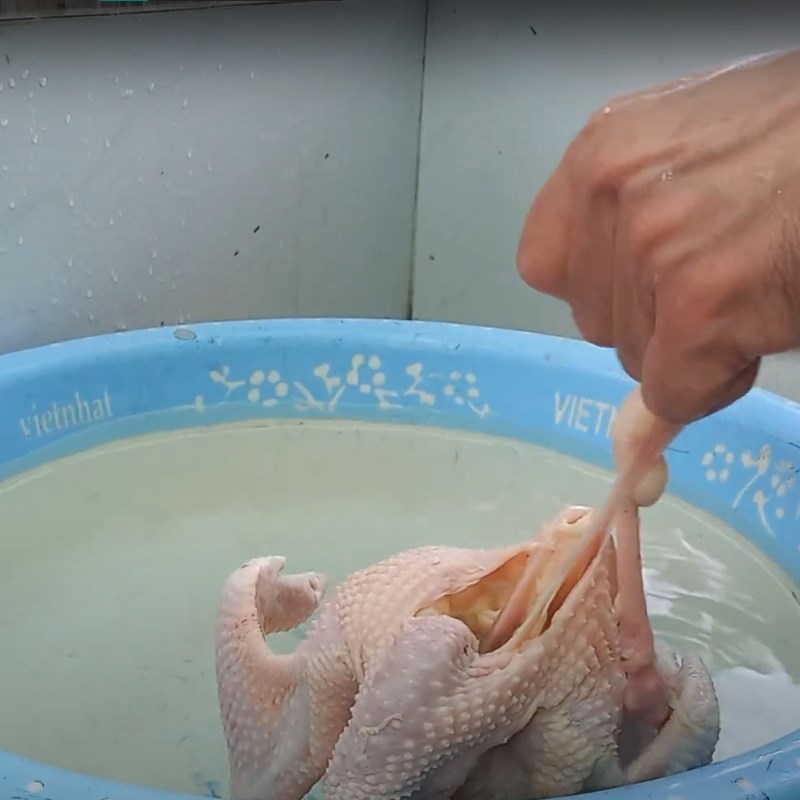
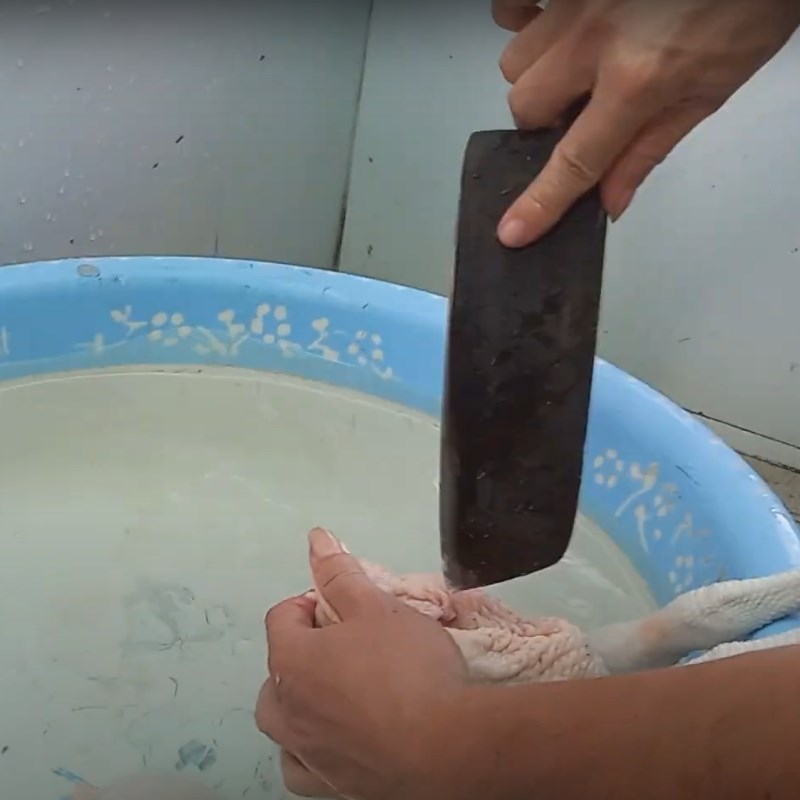
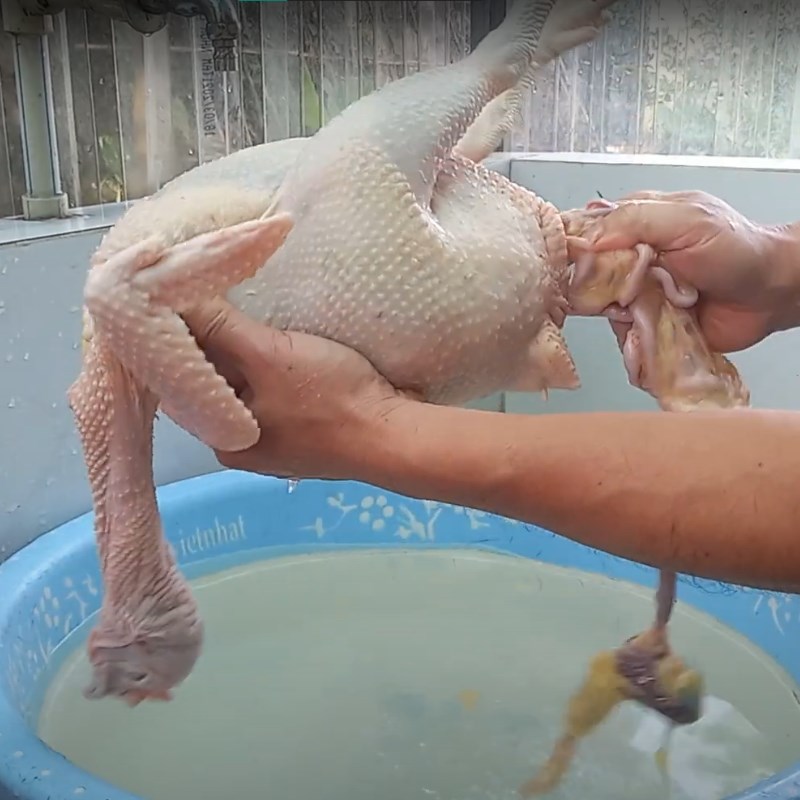
- Slice the ginger and crush it. Mix with 1/2 cup white wine and gently squeeze to release its juice.
- Rub coarse salt inside and out of the chicken to clean off impurities. Rinse thoroughly.
- Then, rub the ginger-wine mixture all over the chicken, inside and out. Let it sit for 5–10 minutes, then rinse again until the skin is no longer slimy.
- Let it drain in a basket.
💡 Optional: For a golden skin tone, rub 1/2 teaspoon of gardenia powder onto the skin and leave for 5–10 minutes before rinsing.
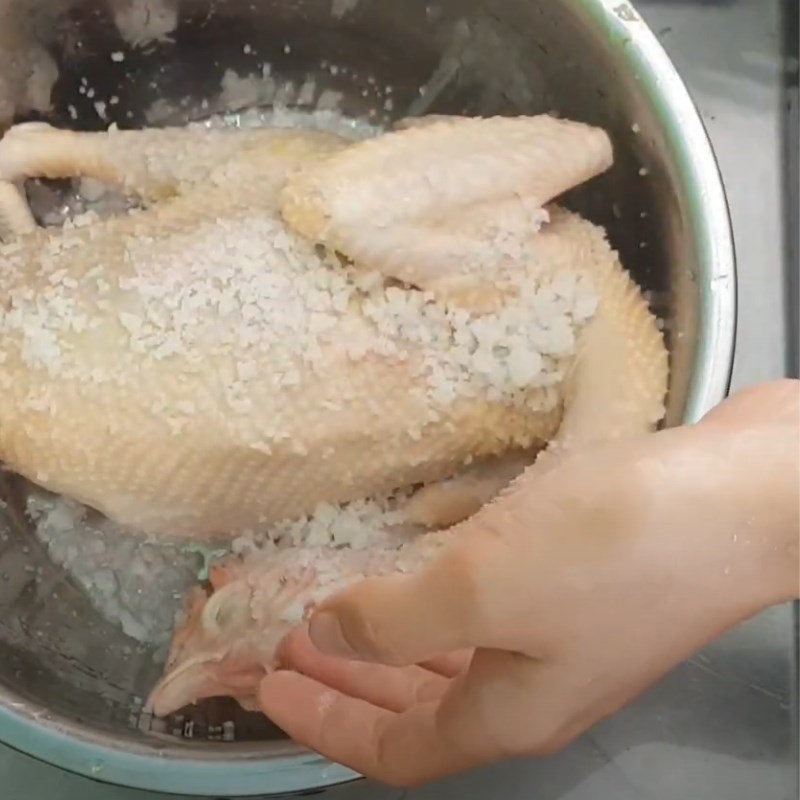
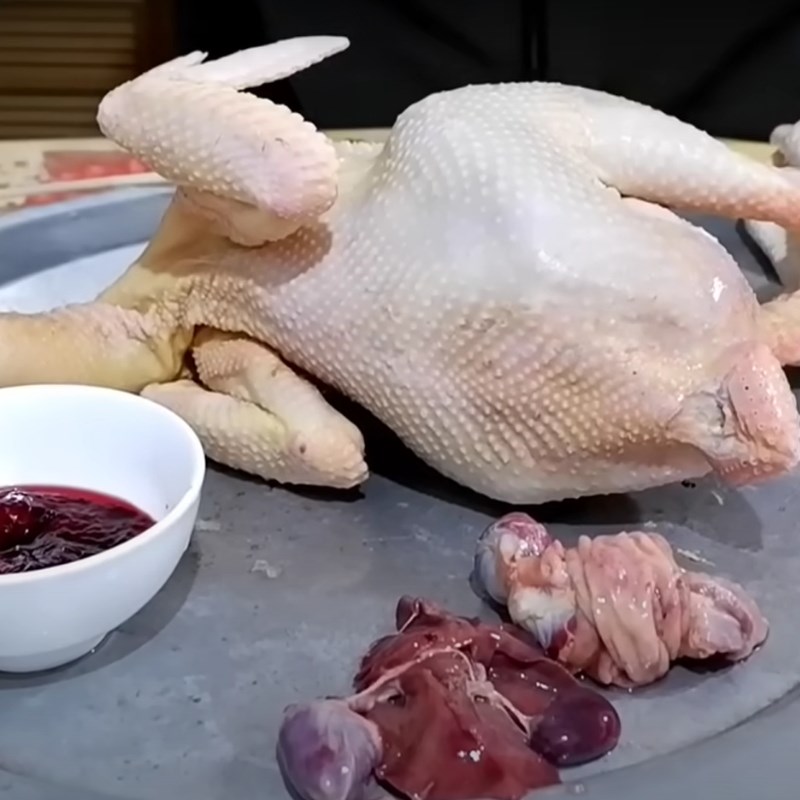
3. Trussing the chicken in “angel-wing” shape
- Tie the wings in a way that makes them arch upward like fairy wings. This step ensures the chicken stands upright beautifully when offered.
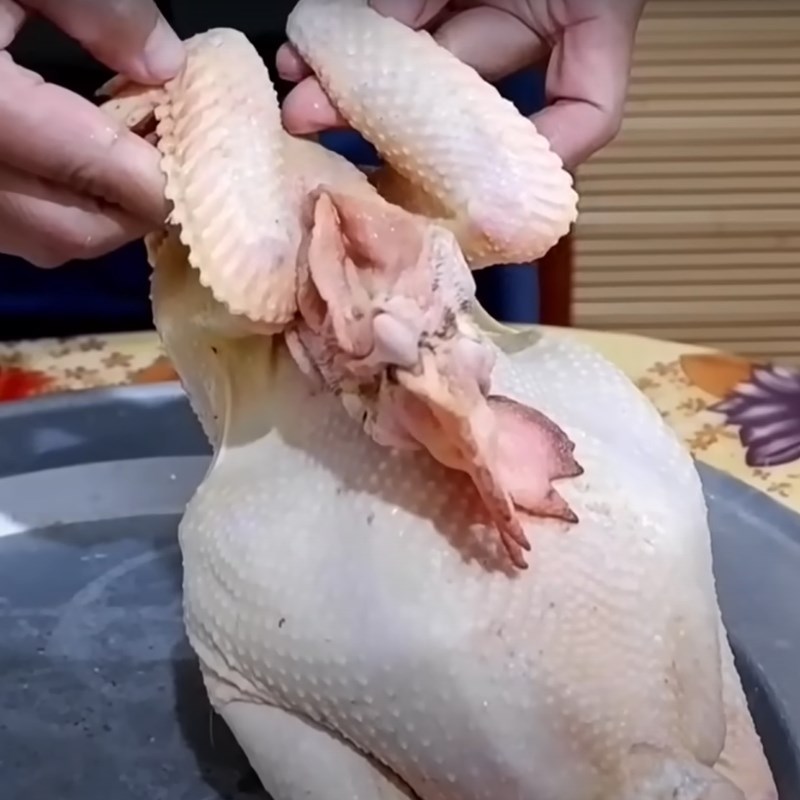
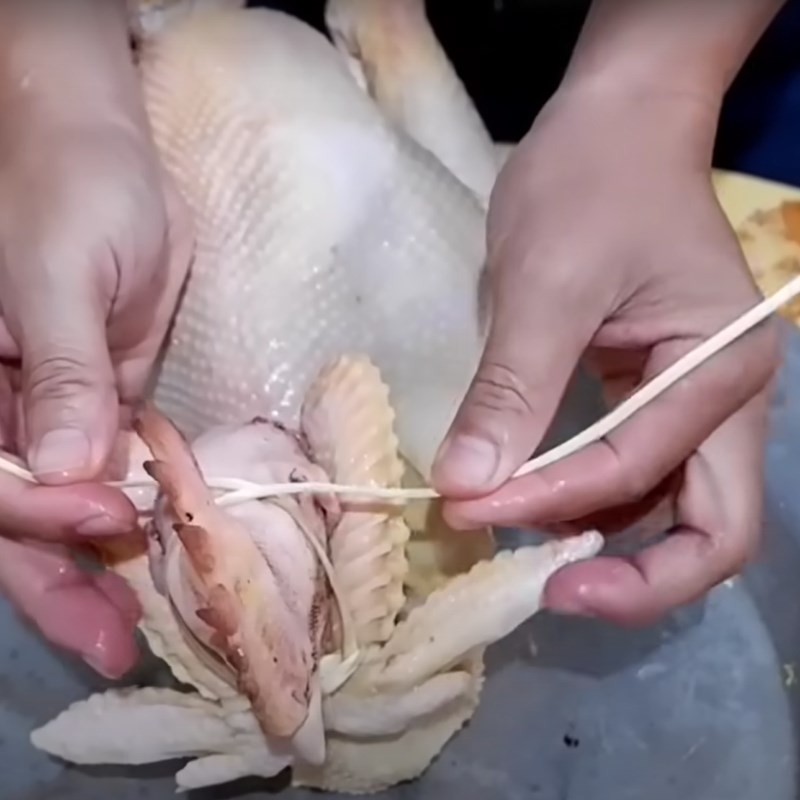
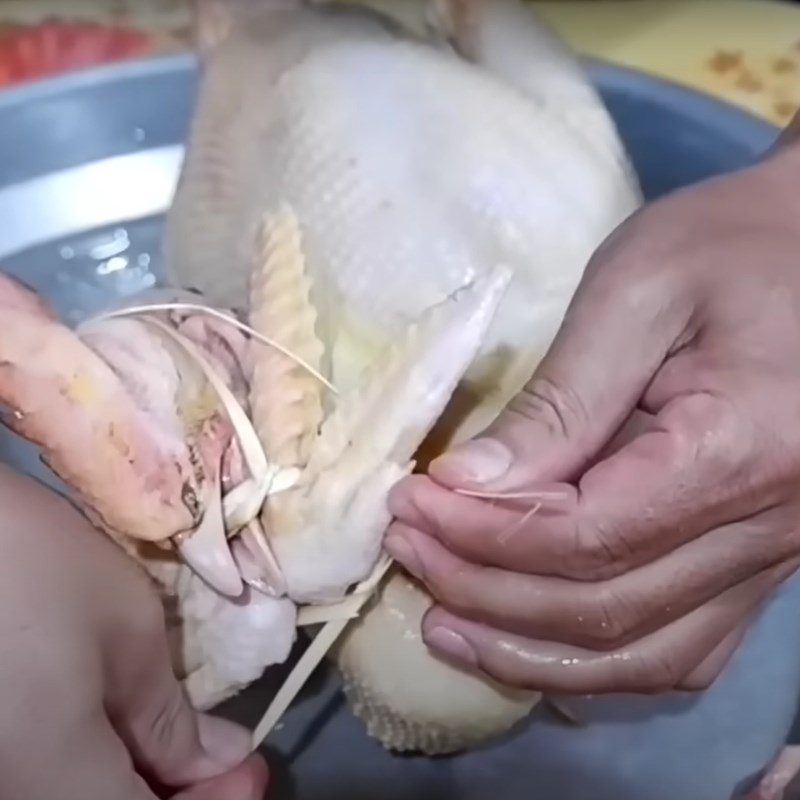
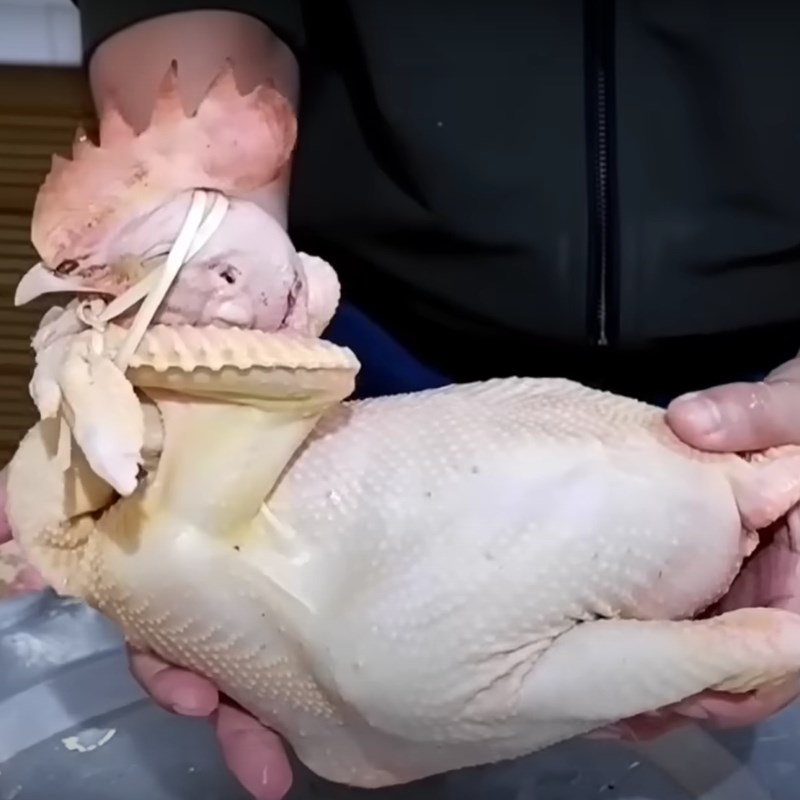
- Boil a large pot of water. Add a crushed knob of ginger and 1 teaspoon of salt.
Place the chicken in while the water is still cold. Bring to a boil, skim off scum, then simmer for 10 minutes. Turn off the heat, cover, and let rest for 3 minutes. Bring it back to a boil for another 3 minutes, then turn off heat and leave the chicken in the hot pot for 2 more minutes. - To check doneness, poke the thigh with a skewer—if no pink liquid oozes out, it’s ready.
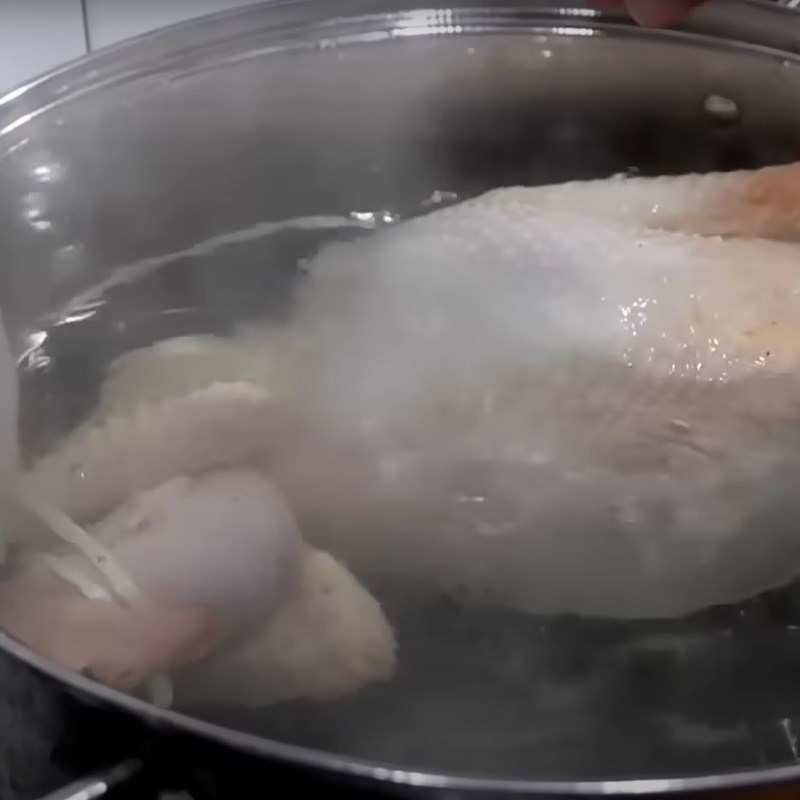
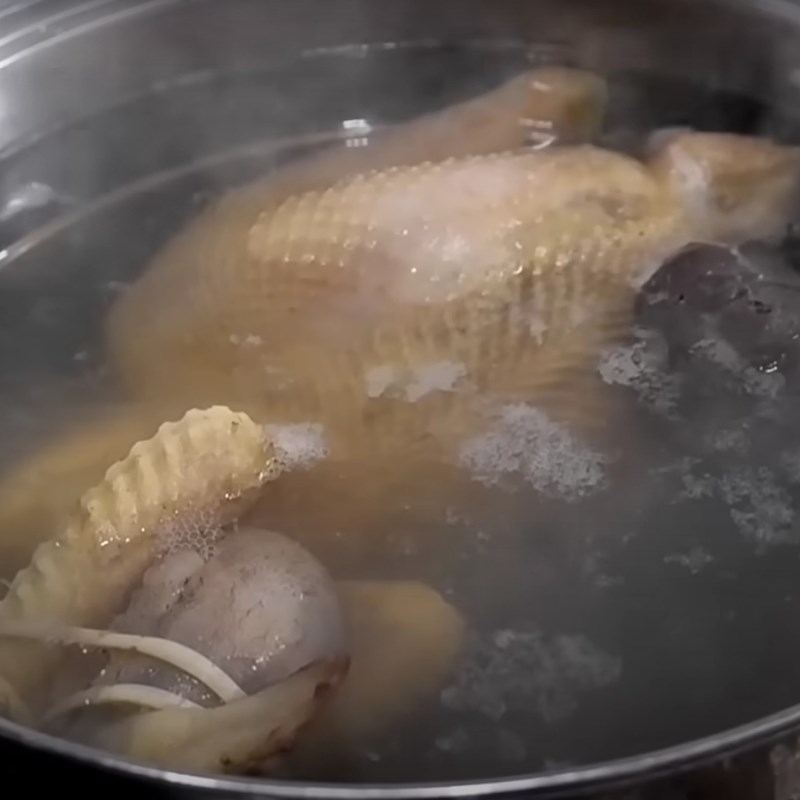
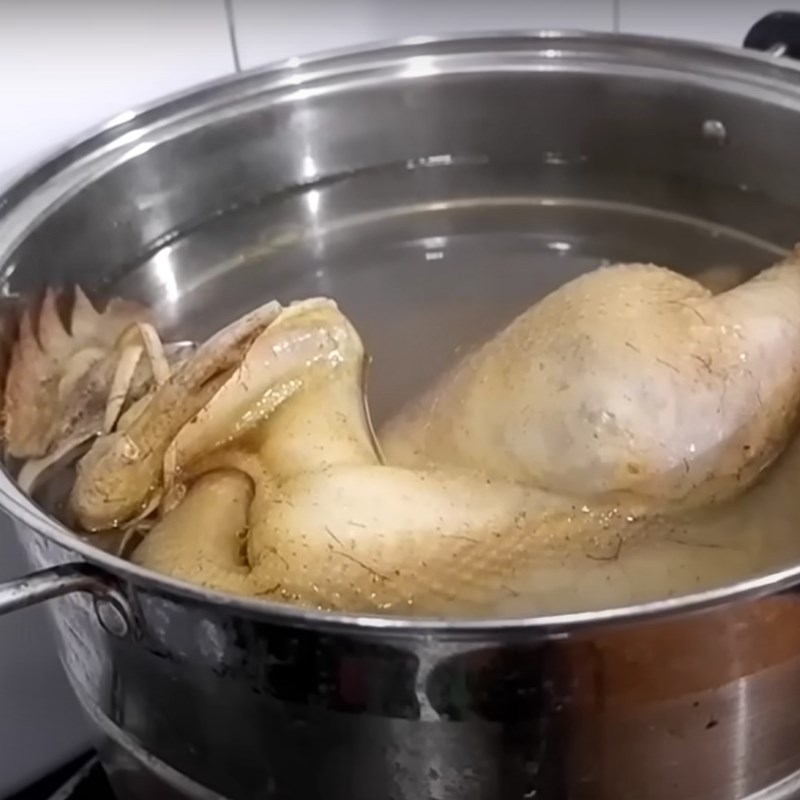
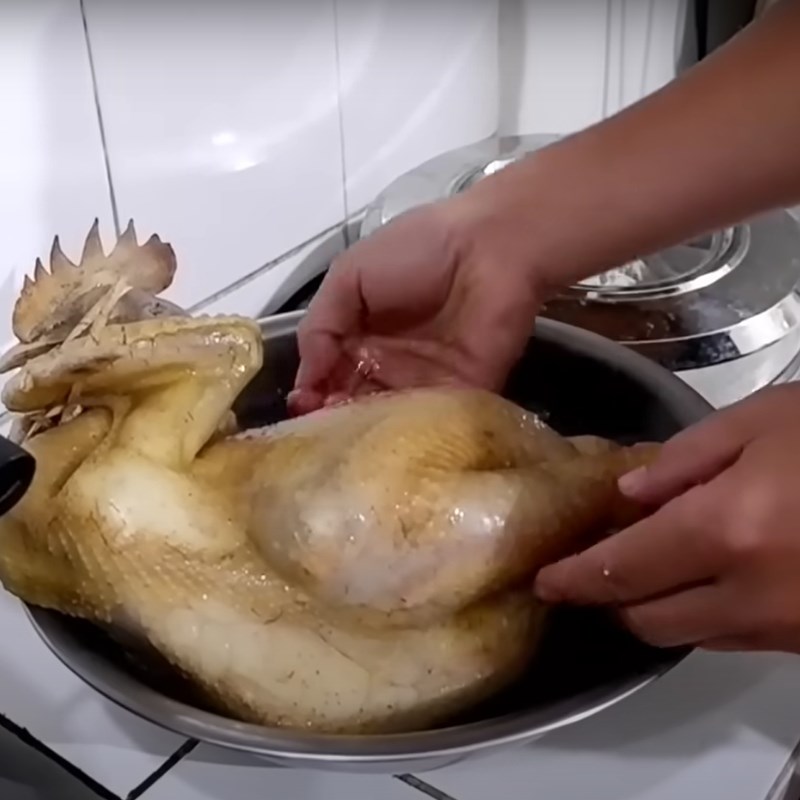
5. Ice bath & plating
- Immediately transfer the cooked chicken into a bowl of cold (preferably boiled and cooled) water with ice. This firms up the skin and keeps it shiny and tight.
- To plate, place the chicken in a bowl set on a plate to help it stand upright. Use cooked giblets (liver, gizzard, blood cubes) to prop it up if needed.
- Once steady, remove the string and adjust the pose. For the finishing touch, trim a rose and place it in the chicken’s beak as an offering.
💡 Tip: Use only cooled, boiled water for the ice bath to extend freshness and prevent spoilage.
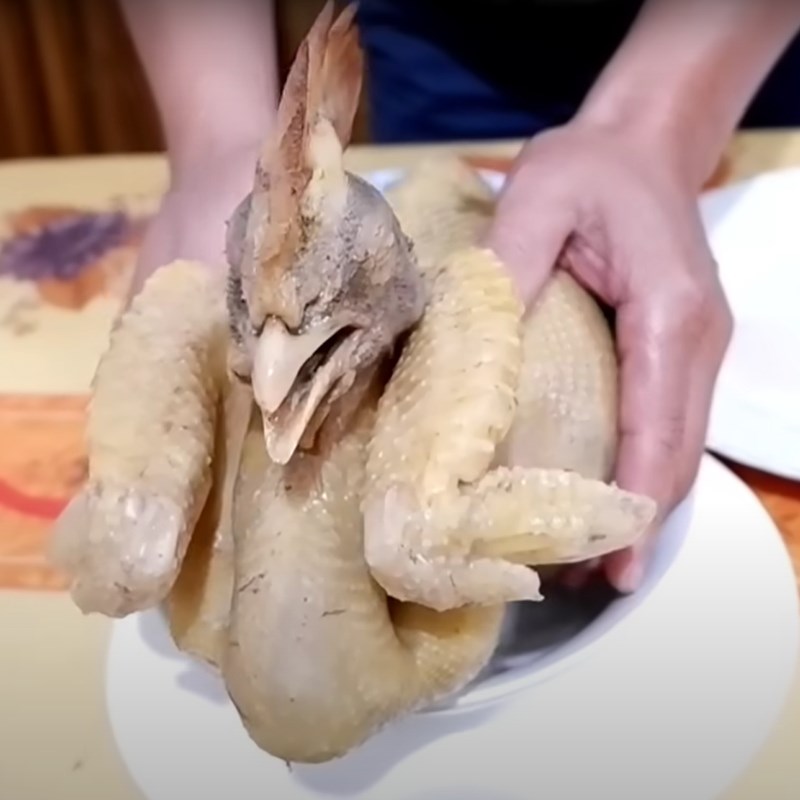
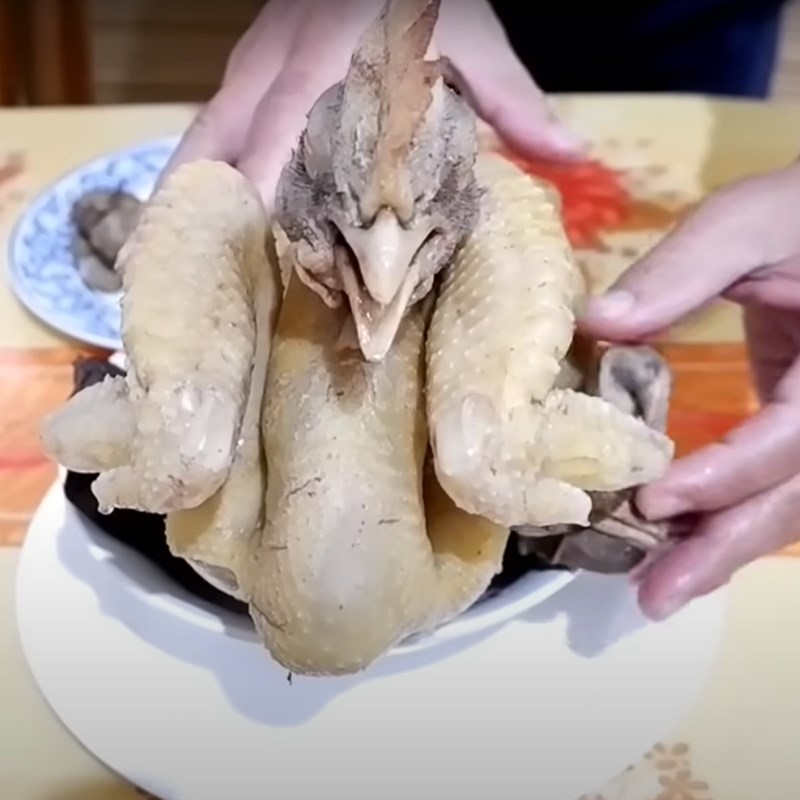
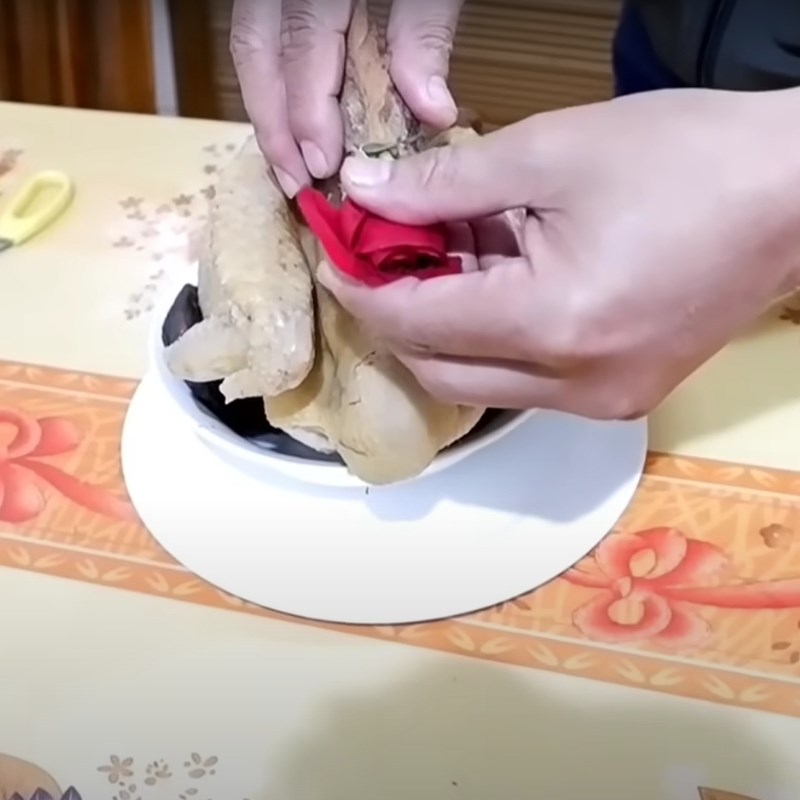
6. Finished dish
Your fairy-wing chicken is now ready to be served as an offering—firm skin, elegant pose, and full of symbolic meaning. A perfect centerpiece for traditional Vietnamese ceremonies.
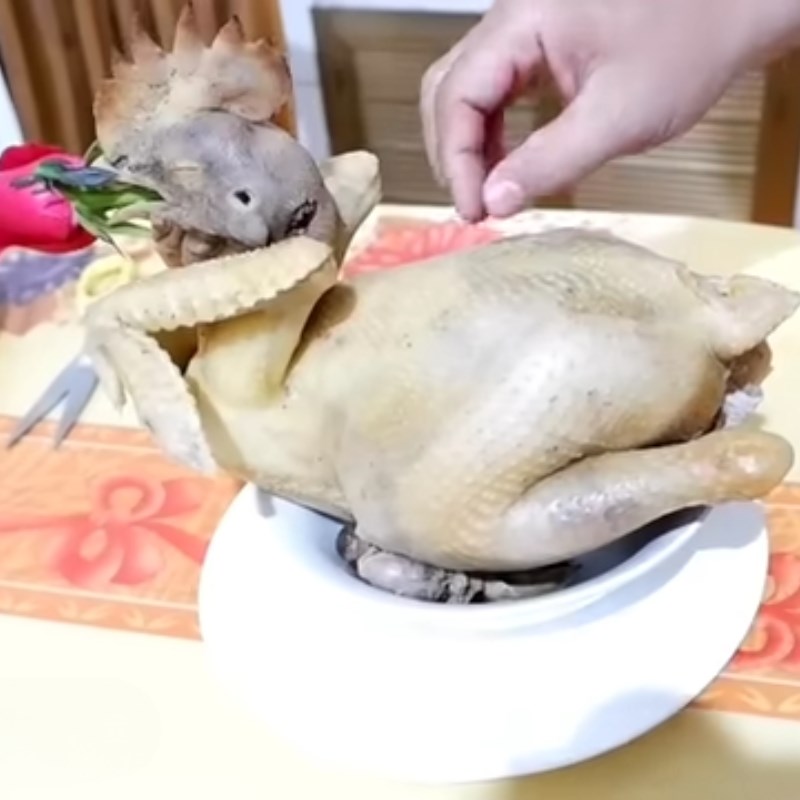

Boiled Chicken with Lime Leaves – A Taste of Home and Hearth
In the hearts of many Vietnamese, gà luộc—boiled chicken—is more than just food. It’s a memory. It appears on every ancestral altar, every Lunar New Year’s table, every family gathering. That golden-skinned chicken, scattered with slivers of fragrant lime leaves, evokes more than appetite; it brings back childhood, countryside kitchens, and the quiet comfort of home.
In the past, before important family occasions, grandma would say, “Go catch that rooster we’ve been raising since spring.” It would be a free-range bird, firm and flavorful from roaming the garden. My mother never plunged the chicken into boiling water; instead, she placed it gently in a pot of cold water, adding crushed ginger and coarse salt. She’d bring it to a boil slowly, then lower the heat, lifting the lid now and then to check on it. This gentle method ensured the meat cooked evenly, with tender flesh and perfectly taut skin—golden, glossy, and slightly chewy.
But her true secret was the bowl of cold water with ice waiting nearby. Once cooked, the chicken would be quickly dunked into this icy bath. It locked in the juices, firmed the texture, and gave the skin a subtle snap. She would then chop the chicken neatly, arrange it on a plate, and garnish it with finely sliced lime leaves. The leaves were never just decoration—they brought a bright, citrusy aroma that elevated the dish beyond its simple ingredients.
Boiled chicken with lime leaves is deceptively humble. Yet in every bite, it holds the quiet artistry of Vietnamese cooking, where respect for each ingredient meets time-honored technique. And in every serving, there’s a story—of family, of heritage, of gathering around a table that always had room for one more.

(Boiled chicken – An indispensable custom in Vietnamese Tet holiday)